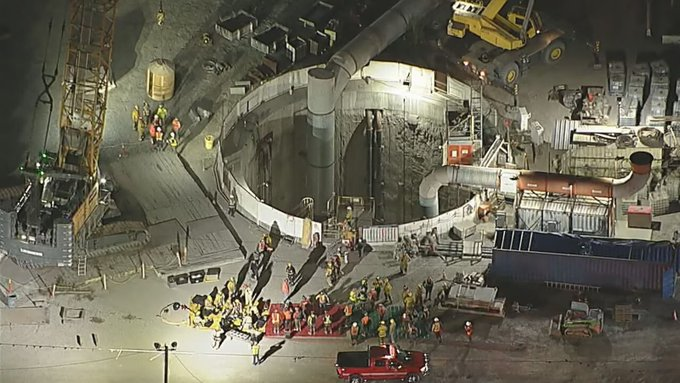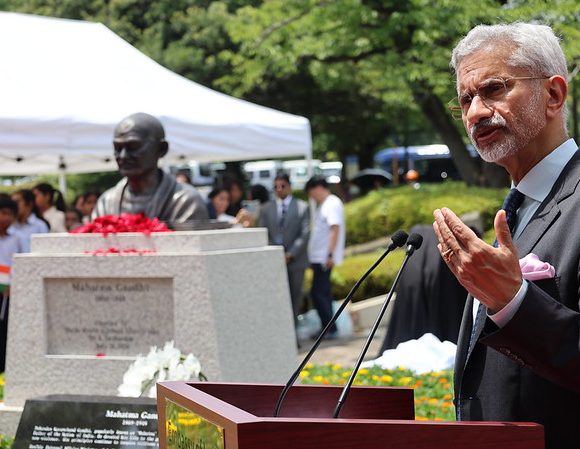
All 31 Workers Rescued After Wilmington Tunnel Collapse in Los Angeles
A dramatic early-evening tunnel collapse in Wilmington, Los Angeles, ended on a positive note as all 31 trapped workers were successfully rescued—a remarkable outcome considering the collapse occurred nearly 400 feet underground. The incident took place around 8 p.m., during work on a major wastewater tunnel being constructed beneath North Figueroa Street, part of a larger $630.5 million Clearwater Project.
LA Tunnel Collapse
According to workers on site, a sudden failure in the tunnel structure caused a 12–15 feet high mound of debris to collapse in front of the crew, sealing off the only exit route. The trapped workers wasted no time; they quickly climbed over the debris mound, regrouped, and proceeded toward the tunnel boring machine. From there, rescue personnel coordinated a rescue operation using a crane-equipped cage, successfully hoisting everyone to safety within about an hour of the collapse.
Swift Rescue Operation
Los Angeles Fire Department (LAFD) promptly deployed over 100 personnel, led by Urban Search and Rescue teams. Emergency crews used heavy-lifting equipment, drilling tools, and specialized gear to stabilize the tunnel and ensure the safety of both trapped workers and rescue teams. Interim Fire Chief Ronnie Villanueva praised the workers’ calm cooperation, and Mayor Karen Bass lauded the operation, calling the rescuers “LA’s true heroes.”
Worker Health & Safety
Miraculously, none of the 31 workers sustained serious injuries. Twenty-seven individuals received medical attention on-site for minor conditions such as dust inhalation and superficial abrasions and were subsequently released. The remaining four were monitored closely before reuniting with their families. The incident highlights both the dangers inherent in underground construction and the strength of emergency preparedness protocols.
Project Context & Response
This tunnel is part of a seven-mile wastewater outfall designed to replace older, decrepit infrastructure dating back to 1937 and 1958. Construction began in 2022 and has progressed in phases. In light of the collapse, authorities immediately suspended work at the site and initiated a comprehensive engineering review. Structural engineers and safety officials have also launched an investigation to determine the precise cause of the failure and to prevent similar incidents during future phases of the project.
Moving Forward
With the workers accounted for and safe, attention now turns to learning lessons from the collapse. The city has indicated that stricter safety measures and more rigorous risk assessments will be implemented across underground construction projects. For now, the success of this rescue stands as a testament to effective emergency response and disciplined on-site practices—an example of lives being saved under extraordinary conditions.


















